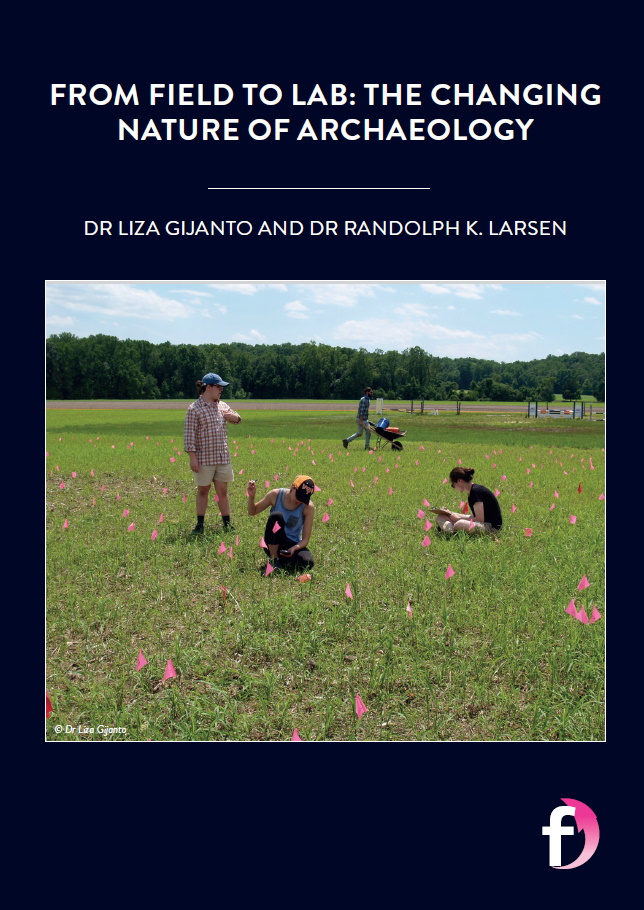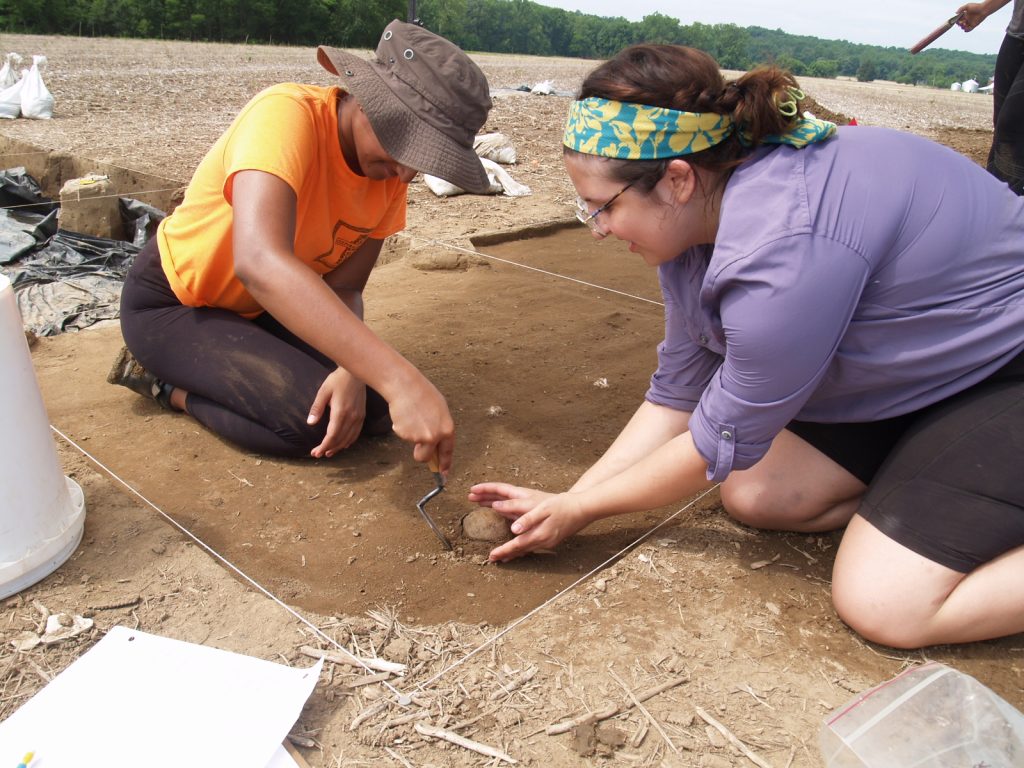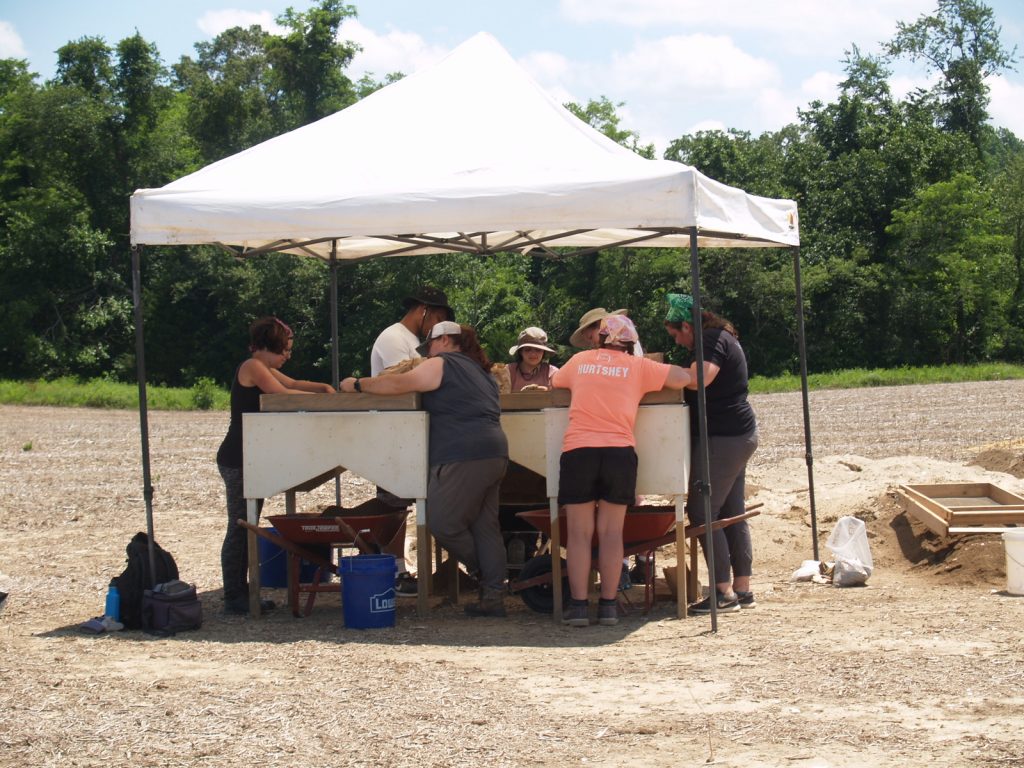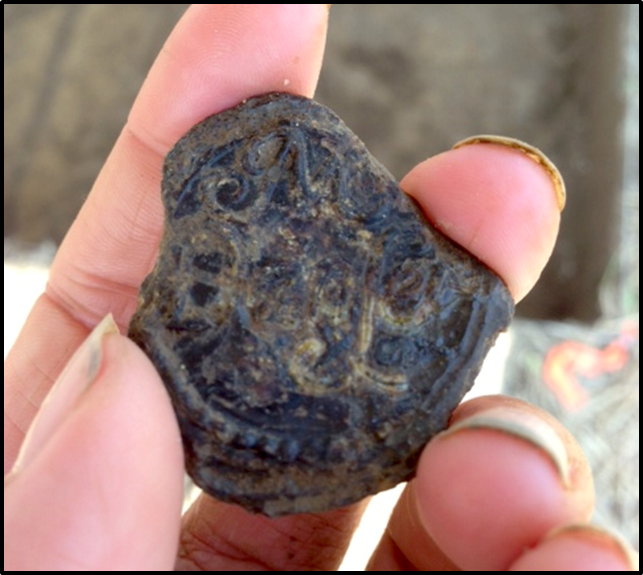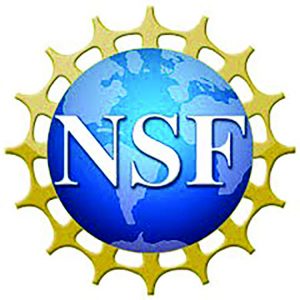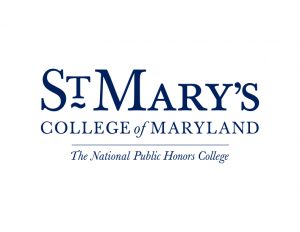From field to lab: the changing nature of archaeology
As techniques improve, archaeology is becoming an ever-more sophisticated process. Though shovels remain useful, dig sites now utilise drones and clever imaging techniques, while back at the lab, analytical chemists use the latest non-destructive methods to analyse artefacts at the molecular level. On the USA’s East Coast, a collaboration between St. Mary’s College of Maryland (SMCM) and the Maryland Archaeological Conservation Lab (MAC Lab) helps bring these strands together
Archaeologist Dr Liza Gijanto and analytical chemist Dr Randolph (Randy) K. Larsen lead the Archaeological Investigations of Colonial Maryland project, which brings SMCM and MAC Lab together with Jefferson Patterson Park and Museum to provide undergraduates with wide-ranging experiences that can help inspire and define their archaeological careers.
A UNIQUE HISTORY
Halfway down North America’s east coast, not far from Washington D.C., Maryland is a state defined by its history and its geography. “Maryland was an area of early colonial experimentation for the British,” says Liza. “Some of the earliest plantations and towns were founded here. In these spaces you had Indigenous communities, European settlers, indentured servants, and enslaved Africans all engaged in a changing socio-economic landscape.” Liza believes that archaeology holds many of the answers to how these people navigated changing times, how they interacted, and how their choices influenced the development of Maryland’s modern society.
The project focuses on West Ashcom, a former homestead in southern Maryland once dominated by an impressive manor house and the various inhabitants that such a place housed. “As I’ve been working at West Ashcom alongside my students, I’ve come to realise that the site represents various periods of socioeconomic history,” says Liza.
DIGGING FOR ANSWERS
The project provides an introduction for undergraduate students into the practical world of archaeology. “Students are engaged in all phases of archaeological excavation,” says Liza. “This begins with surface surveys and shovel test pits, but our focus has been on full excavation of specific areas.” Liza’s team uses drones to take aerial surveys of the fields where they work to look for tell-tale features of the land that suggest something is hiding underneath.
The team has made some interesting discoveries. “We have found a lot of tableware from the 17th and 18th centuries, suggesting that despite being inland, people had access to materials from Europe,” says Liza. “We also found a cannonball from the war of 1812. Perhaps the most significant find, however, was a bottle seal inscribed with the name of Martha Dansey, only the second found in the area made for a woman.”
BACK IN THE LAB
Initial artefact processing involves careful washing, sorting and labelling. Once inventories are generated, Randy steps in to supervise the analysis of samples in more scientific detail. “Students from a variety of academic backgrounds conduct experiments on the artefacts collected, using techniques such as thermal analysis and several different types of spectroscopy,” he says.
Thermal analysis involves recording how a sample responds to temperature. Spectroscopy techniques measure how samples respond to different sorts of electromagnetic radiation, such as infra-red. By comparing to known information about a materials’ behaviour, the results of these experiments yield insights into the molecular and chemical makeup of the sample.
BROAD UNDERSTANDINGS
As well as building practical skills, the project provides opportunities for students to build working relationships. “Students network among themselves, as well as with staff,” says Liza. “We also mentor alumni through a number of local and national archaeological conferences.” Randy draws attention to the cross-disciplinarity of the work. “We bring together students from backgrounds in history, anthropology, archaeology, chemistry and museum studies to work collaboratively on the project,” he says.
This meshing of disciplines gives students a more holistic perspective on the world of archaeology. “We believe it is important to demonstrate that archaeology is more than just excavation techniques,” says project mentor Nichole Doub. “Learning about archaeological conservation, students understand how excavation and curation link to the research and preservation of the data recovered.” The project staff have already seen the fruits of their labours in the professional development of their students. “My goal has been to train and prepare students for careers in archaeology and museums,” says Liza. “It’s immensely rewarding to see these students enter professional positions and mentor younger students themselves.”
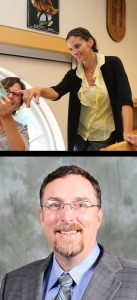 DR LIZA GIJANTO
DR LIZA GIJANTO
Associate Professor of Anthropology, St. Mary’s College of Maryland, USA
FIELD OF RESEARCH: Archaeology
DR RANDOLPH K. LARSEN
Professor of Chemistry, St. Mary’s College of Maryland, USA
FIELD OF RESEARCH: Analytical Chemistry
JOINT RESEARCH PROJECT: Running the Investigations of Colonial Maryland undergraduate programme
FUNDERS: US National Science Foundation (NSF), The Cremona Foundation
ABOUT ARCHAEOLOGY
Archaeology involves the careful excavation, study and conservation of artefacts to learn more about human history and prehistory. Liza explains, “There is a push for more emphasis on collections. Students should be prepared to care for and utilise existing collections and try to limit excavation. While excavation remains important, we now have more non-invasive ways to preserve, investigate and manage sites.
To some extent, what subjects you should take depends on the time period you’re interested in. For more modern history, history and geography are important, while further towards prehistory, there may be more focus on anthropology and geology.”
- The Society for Historical Archaeology, Society of American Archaeology and the World Archaeological Congress are good places to start exploring this field.
- St. Mary’s College of Maryland offers regular public lectures, as well as open dig days for anyone interested in archaeology and volunteer opportunities in the lab. It also offers internships or opportunities for its students to be hired as field or lab technicians.
Reference
https://doi.org/10.33424/FUTURUM278
Take your time. Make sure you get as much practical experience as possible in the field and lab before you reach graduate school.
ABOUT ANALYTICAL CHEMISTRY
Analytical chemistry involves identifying the substances within a sample using often-sophisticated chemical techniques. For archaeological artefacts, these techniques can help identify a sample’s age, place of origin and other characteristics.
Randy explains, “My high school chemistry teacher made chemistry make sense to me. I grew up in an era when environmental activists were protesting against polluting factories. I believed that by learning the science, I could help prevent this pollution from inside the industry. This led me to studying chemical engineering, before specialising in environmental chemistry.
My experiences in graduate school led to an academic position as an analytical chemist. The skills I was using to measure traces of chemicals in the environment are very similar to those needed to analyse the chemistry of archaeological artefacts.
Archaeometry – the use of scientific methods and technologies within archaeology – is a growing area that needs highly skilled chemists. Finding non-destructive testing methods for important artefacts helps us learn more about humanity’s past, while preserving cultural heritage for future generations.
I recommend taking as many science and mathematics courses as you can. At college or university, I suggest majoring in chemistry or a related subject such as chemical engineering, biochemistry, or material science.”
- The American Chemical Society and the Royal Society of Chemistry are two professional organisations with great websites for prospective students.
Make your own path. Take courses that challenge you and don’t be afraid to try something new. It is only through trying new things that you can find out what you enjoy the most.
MEET SCOTT
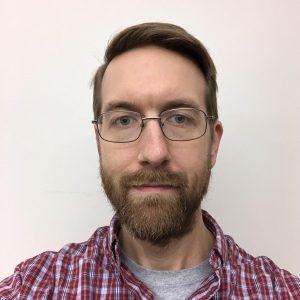
SCOTT STRICKLAND, Deputy Director of the Maryland Archaeological Conservation Laboratory and an Adjunct Instructor of Geographic Information Systems (GIS) at St. Mary’s College of Maryland
Specialisms: spatial patterning and modelling, colonial records research and studying the history of Anglo-Native interaction in 17th century Chesapeake.
“A typical day consists of going through a GIS-related concept and demonstrating several examples of it used in an archaeological context. GIS is a type of database focusing on location-based data, often visualised using maps. Following an introduction, students are then given sample datasets and instructed how to apply those concepts on their own.
GIS is used most often in archaeology to digitise and reference multiple datasets using real-world coordinates. This allows plans of excavations to be overlaid with other spatial data, such as soil composition, topography and other environmental data. Additionally, field data can be mapped to create distributions of artefact types.
In this programme, I see students go from having no background in GIS and very basic spatial knowledge to having a good grasp of how to read and interpret complex spatial data and produce high-quality map graphics.
Meeting dedicated students who ask insightful questions is great. This allows me to explore other avenues and tools in GIS that I might not use on a more daily basis.
Before I was an archaeologist, I was a land surveyor. I’ve always had a deep interest in maps. I used my interests and experience to carve myself a spot within this niche area. I went to graduate school specifically to learn GIS applications in archaeology.
One discovery I made could be classified as a eureka moment. In the 17th century, major Native towns were typically located on the northern bank of the Rappahannock River. For decades, this phenomenon has been explained as politically motivated, but an archaeology sensitivity model I developed found that environmental reasons were more significant.”
SCOTT’S TOP TIP
Find something you like and run with it, even if it’s a niche interest. Find a graduate programme that best suits what you want to do.
MEET NICHOLE
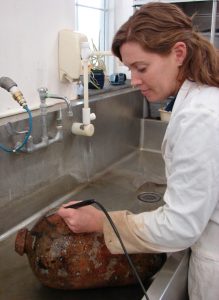
NICHOLE DOUB, Head Conservator, MAC Lab
Specialisms: archaeometallurgy, East Mediterranean/Eastern European archaeology, and historic ships.
“As an archaeological conservator, I help students to understand how the choices made in the planning, excavation and curatorial stages can impact the research and preservation of the data recovered. I give students the opportunity to sample the methods and techniques that conservators use in the treatment of artefacts.
I was pursuing a traditional education in archaeology and looking for a graduate programme to continue my studies when I met a conservator while on an excavation. Coincidentally, I was also studying chemistry (because my parents didn’t have confidence in a career in archaeology) and it seemed natural to combine the two disciplines and pursue a specialisation in archaeological conservation.
Archaeology can be very unpredictable. It is difficult to determine from the outset what the state of preservation may be and exactly what may be recovered. This can be challenging when in the planning phases and we have to rely on research and experience, but it is also enjoyable because the work is rarely repetitive or dull. You also work with a wide variety of colleagues in different specialisations who all share the same curiosity.
Fostering an understanding of the role conservation plays in the archaeological process is very important to me. Early exposure normalises the multidisciplinary nature of the field. Should any of these students go on to pursue a career in archaeology, they will be better able to communicate and collaborate with their conservation colleagues and be better stewards of our archaeological heritage.”
Formal education will only take you so far – pursue opportunities outside the classroom to acquire new experiences and skill sets. This is enriching and helps when applying for jobs and other opportunities.
MEET ISAAC
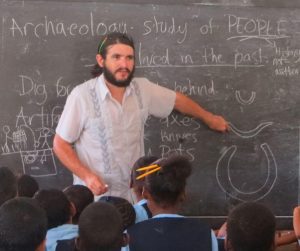
DR ISAAC SHEARN, Drone and Photogrammetry Instructor for the project
Specialisms: the archaeology and ethnohistory of the Caribbean and South America, developing inclusive and participatory methods for public archaeology.
“A typical day in the field will include working with a group of students to plan and execute a flight. We decide where we are going to capture imagery, plan a flightpath, and then watch as the drone automatically executes the flightpath. Later, in the lab, a lot more time is required to process and analyse that imagery and integrate it into a working topographic model of the landscape.
I started using aerial imagery and photogrammetry to accomplish a mapping project in Guyana that my graduate advisor had started back in 2011. I presented the results of that research at a conference, and faculty from St. Mary’s were in attendance. They were intrigued about the technique and approached me to get involved in their project.
Using drones and photogrammetry allows us to produce maps and images with extremely high accuracy and precision, at a fraction of the cost that other comparable techniques such as LIDAR would require. It also allows us to be more flexible in choosing what and where to produce maps.
Students with the patience and interest to get over initial learning and troubleshooting hurdles are often overjoyed at the power of the technique and the potential for future applications. It is always rewarding for me to expose students to new methods and instruct them in techniques that can be at their disposal.
The first time I tried to create a 3D map from aerial imagery was using from a camera mounted on a kite rather than a drone. I was in the middle of Guyana, had been trying to get it to work for days and had to point fans at the laptop to keep it from overheating because the software can be very intensive! When we first saw the 3D map of the site we were working on, we jumped for joy.”
Any meaningful career takes a tremendous amount of perseverance and patience. Make sure you follow the path that will make you happy, and don’t do anything just because others suggest you should.
MEET BECKY
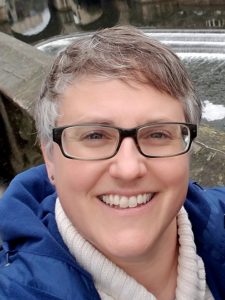
REBECCA MOREHOUSE, Curator of State Collections, MAC Lab
“A typical day as a curator can include everything from responding to research requests, rehousing artefact collections, accepting and recording new collections, processing artefacts for loans to borrowing institutions, or basic housekeeping in the collections storage area.
I worked with my first archaeological collection as an undergraduate and I knew then that I wanted to pursue a career in archaeological collections management. I went on to get a master’s in anthropology and museum studies, which helped me get my first position at the MAC Lab.
I specialised in curating because I enjoyed the lab side of archaeology much more than the field work. I get great satisfaction from rehousing old archaeological collections and making them accessible to researchers and the public.
The challenges of curation include the general lack of resources available to support long-term curation. The rewards include seeing a collection that you have rehabilitated be used by researchers or placed on exhibit for the public.
The most important thing for students of curation to learn is the importance of good organisational skills and attention to detail. Students learn this through lectures on the various curatorial tasks, as well as through hands-on work with collections. For me, the opportunity to help train a new generation of curators and collections managers is very rewarding.
The eureka moment in my own career was realising there’s more to curation and collections management than just preserving and protecting the collections. The MAC Lab’s collections are held in public trust and belong to Maryland’s citizens. Making them accessible for research, education and exhibitions is equally important.”
Get as much experience as possible early in your training. Internships, volunteering and part-time work all provide experience and make you a better candidate for graduate programmes and your eventual career.
Do you have a question for the Liza, Randy, Scott, Nichole, Isaac or Becky?
Write it in the comments box below and Liza, Randy, Scott, Nichole, Isaac or Becky will get back to you. (Remember, researchers are very busy people, so you may have to wait a few days.)

